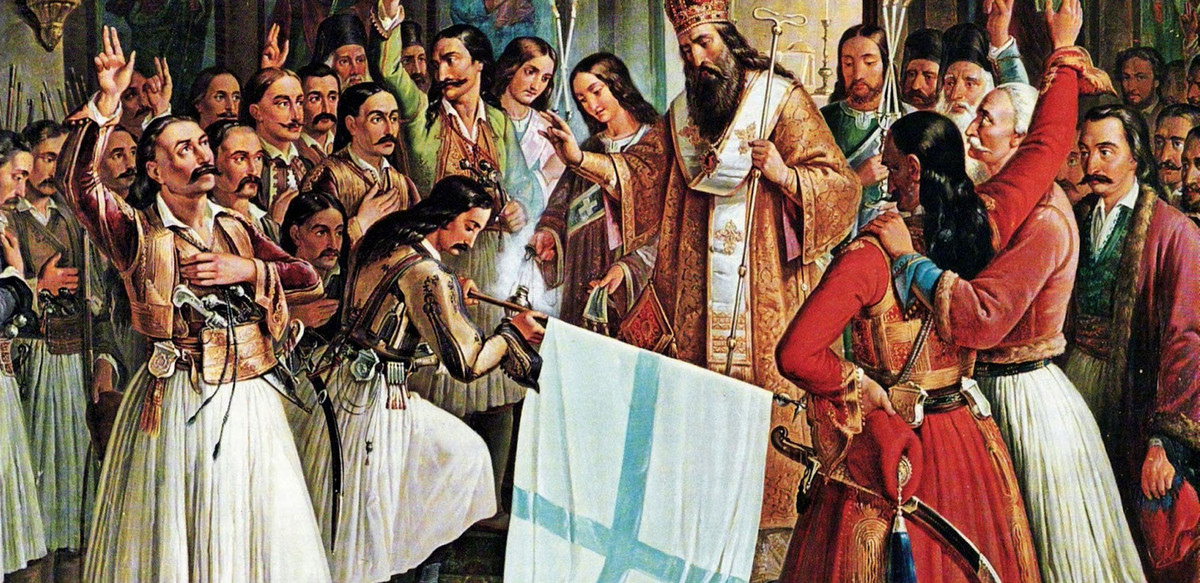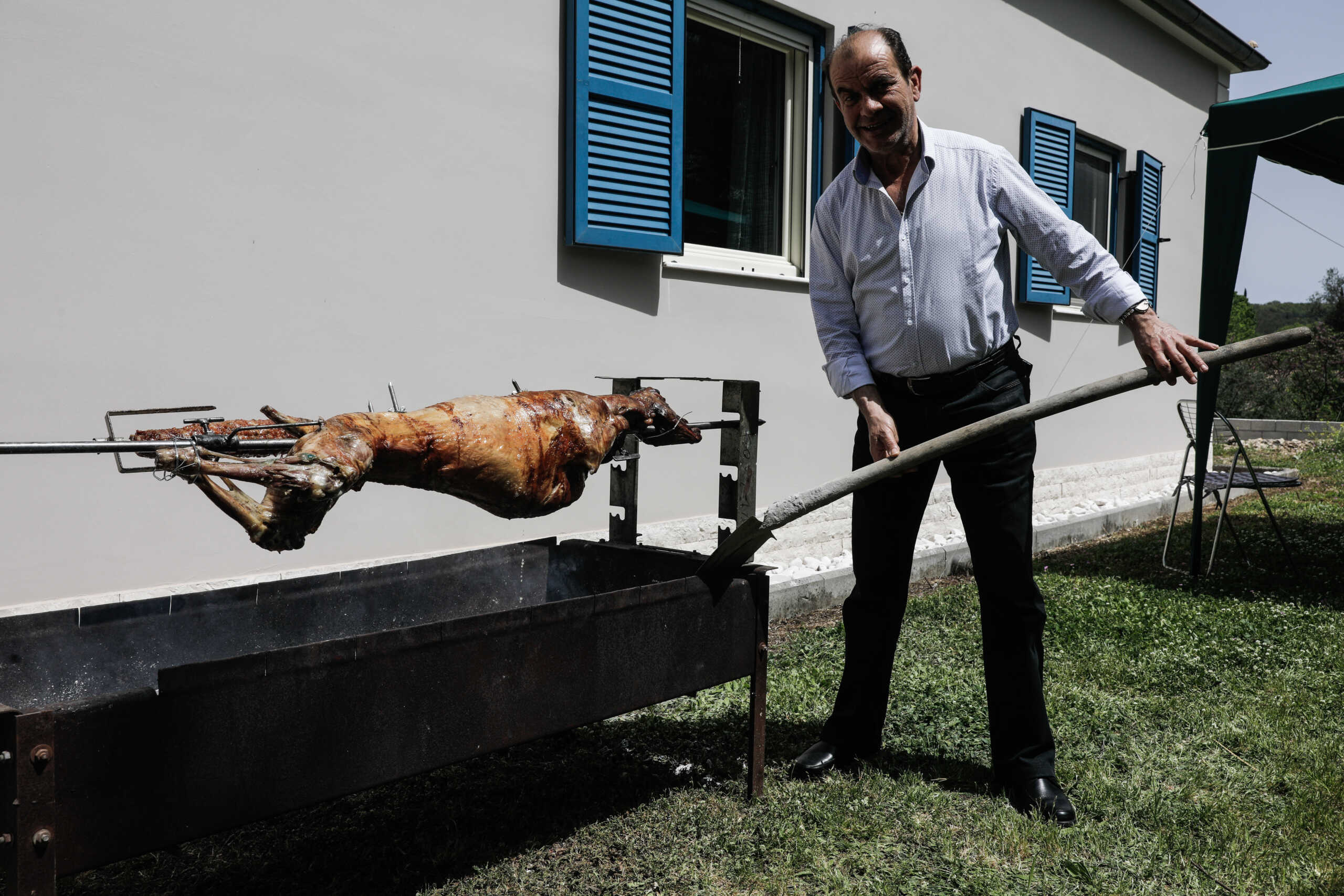
Did Russia support the Greek revolution two centuries ago or not? The question has been the subject of debate from time to time and to this day opinions differ. And here’s why The answer is not a single word “yes” or “no”. The National Liberation War lasted until 1821 and the last major battle with the Ottomans took place in September 1829, while the Protocol of Our Independence was signed in February 1830.
Hence the time period since it erupted revolution Until the formation of the state became very long and during these years the situation changed several times, as it also happened with the other two superpowers of the time, England and France. We must always bear in mind that the leadership of each country seeks, as is natural, primarily to promote its own geopolitical interests. So the study of the question “if and to what extent the Russian Empire joined the struggle of the Greeks” coincides with “Whether and to what extent the interests of the tsar coincide with ours”. It should be noted that during the massive revolution Russia Two emperors ruled, first Alexander I (from March 1801 to November 1825) and then his successor Nicholas I (from December 1825 to March 1855).
Waiting for the “blond generation”
During the Turkish occupation, one of the most popular folk songs created by Greek slaves referred to “Moscow“(that is, Muscovites) who will come”Severi(Army). Our ancestors usually sang:
Until this spring
stretch marks and stretch marks,
this summer
poor rumli,
So Moscow comes
stretch marks and stretch marks,
to bring the cipher,
Morea and Romilly.
The Russian turned into a hope for liberation. “Moscow and we have a church, the tsar will be our king and protector“They used to say, as it is vividly portrayed in the historical novel” Mavruliki – History of the Turkish Empire (1565-1799) “by the prose writer Thanasis Petsalis Diomedes. But years passed and “A blonde breed from the northwas not in sight.
The failed Orlovix project
It will be his most important appearance before the revolution with Literally in 1770. At that time, the ambitious Empress Catherine II of Russia decided to pit the Greeks against the Ottomans. Two years earlier, a Russian-Turkish war broke out Tsarina gives the conflict the character of a crusade against Islam. Its aim is that the Greeks also revolt, so that this movement serves to distract the Sultan, so that the Russian forces can more easily occupy the northern provinces of the Ottomans.
He even sent him to the Peloponnese One of the Orlov brothers who were officers in the Russian army (hence the name “Orlovics”) with a small force of men-at-arms. but The uprising was suppressed by hordes of Turkulvanians, who massacred the rebels (mainly Manites). The Russians, realizing that events were beginning to take a negative turn, departed with the ships, leaving the slaves to the mercy of the conqueror.
However, in the following years Greeks are allowed to move freely on Russian lands And in the areas of its influence, it created a ferment of well-to-do merchants and shipowners who, in the following years, would contribute to the revolution. After all, it was created in the port city of Odessa In September 1814 The Friendly Society by Nikolaos Skoufas, Emmanuel Xanthos and Athanasios Tsakalov. In the comparative region there was a thriving Greek element, security was provided and it was close to the wider Greek region.
The secret organization that paved the way for the national liberation struggle initially chose him as its leader Joint Foreign Minister of Russia, Ioannis Kapodistrias. However, the chief diplomat belongs to those who formally and solemnly asserted that the conditions were not yet ripe for throwing off the Turkish yoke. He was not liberal or more radical.
Vertically opposed the tsar at the outbreak of the revolution
When the Revolution of 1821 broke out, Russian Tsar Alexander I opposed such a move. Following the dictates of the Austrian Chancellor Clemens von Metternich and other Central Powers of Europe who did not want to disrupt the established order and a possible change of borders, he avoided the support of the Greeks.
However, the head of the friendly assembly, Prince Alexandros Ypsilantis, knowing the feelings of the Greeks towards Russia, excites them from the Danube regions, Which means that St. Petersburg (then capital of the empire) was behind this movement. “Take action, friends, and I want a mighty force that will defend our rightsIt is mentioned, among other things, in the revolutionary proclamation entitled “The Struggle for the Faith and the Fatherland”.
Change of position after the massacres
position of the Russian Empire changed in April 1821, A few weeks after the raising of revolutionary banners in the Peloponnese and Central Greece, Sultan Mahmud II, under pressure from radical Islamic demonstrations, requested an order for a general massacre of the Greeks in Constantinople which also led to the hanging of the Ecumenical Patriarch Gregory V.
As the Ambassador of the Russian Federation in our country, Mr. Andrei Maslov, stated in an interview with the site, “Russia sought from the Ottoman gate to observe the agreements that gave rights to its Orthodox population. It was the Russian envoy in Constantinople, Baron Stroganov, who initiated the joint protest of the Sultan on behalf of the European powers However, the Sublime Porte chose the path of escalation, and in July 1821 the entire Russian diplomatic mission led by Stroganov left Constantinople in protest. Diplomatic relations between Russia and Greece were severed.
The revolutionary partition plan of Greece
And, perhaps, Hellenism during the revolution longed for an independent state, however, in the middle of the struggle, it encountered a plan to create … three separate states, which few people remember nowadays. Tsarist Russia was the initiator of the project.
It all began when the great power of the time decided that it must change its policy and from the refusal of revolution declared with its consent in May 1821 at the Leibach Congress, to lead two and a half years later to wholeheartedly support this prospect. to solve the Greek issue.
In order to harvest its lands from the faltering Ottoman Empire and to strengthen its influence in southeastern Europe, it proposed in January 1824 the creation of not one, or two, but three independent state formations subservient to the Sultan; In this case to Mahmud II. Russia wanted to create these states to act as bridgeheads to finally be able to have much-sought-after free access to the warm seas of the Aegean Sea and the wider Mediterranean.
Borders to be drawn by region
The independent hegemonies which he drew on his maps and promoted so as to function by the standards of the Transdanubian regions, would be: one in eastern Greece as far as Thessaly, another in western Greece as far south as Epirus and a third in the Peloponnese which also included Crete. The inhabitants of these three sections will have all power in their hands, based on the planning that has been done by Petersburgers, but they would pay taxes to the dominant Turks who would maintain a limited military force and some strategically important castles. The great powers of that time were supposed to be the guarantors of the orderly functioning of this entire system. The French agreed at first, but the English were very wary of it and, as is known, it was never enforced.
Contribute to the destruction of the Ottoman fleet in Navarino
streets October 20, 1827 ADA huge firepower from the ships of the English, French and Russian fleets sank the ships of the Ottomans and Egyptians in the naval battle of Navarino, giving a deep breath to the Greek revolution which was suffering due to, among other things, civil strife. The Russian ships in the sea battle were inferior to the English and French, and they finally entered the bay under the command of the Dutch admiral Longinus Haydn. The squadron consisted of 8 ships with approximately 4,000 sailors.
The Russian ship “Azov” destroyed three frigates, a cruiser and an 80-gun ship. Finally, it should be noted that on board the majestic ship were four future admirals of the Russian fleet. Mikhail Lazarev, Pavel Nakhimov, Vladimir Kornilov, Vladimir Istomin.
- Georgios Sarris is a journalist – member of ESIEA, honored by the President of the Republic with the Ath Prize. Botsi for his objective and comprehensive presentation of historical political issues.

“Hipster-friendly coffee fanatic. Subtly charming bacon advocate. Friend of animals everywhere.”





More Stories
Australia: Knife attack by a 16-year-old
The President of the University of Glasgow was prevented from entering France
The first step towards a truce in Gaza: news of Hamas agreeing to a hostage exchange plan